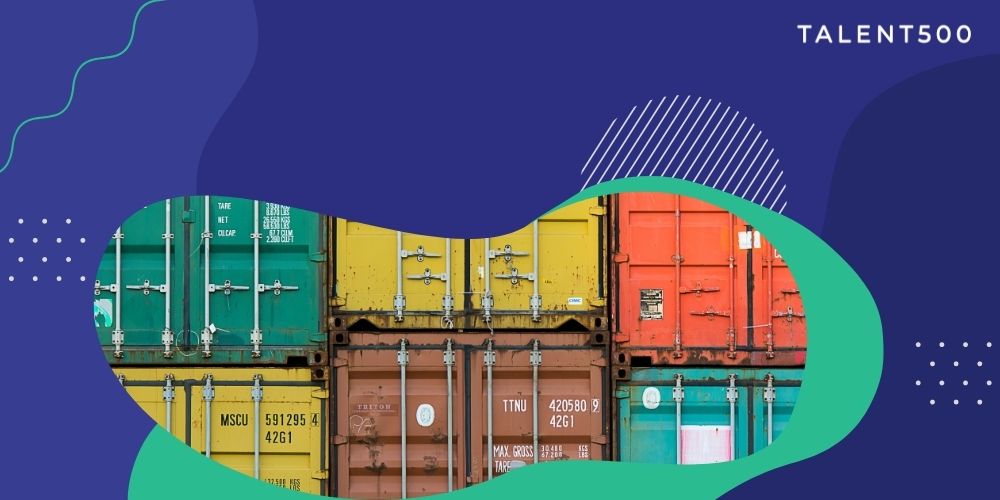As the Great Reshuffle gathers steam and shifts the power into the hands of the modern employee, it is imperative that organizations double down on their efforts to attract and retain the best talent. The demand for skilled talent is now higher than ever before, and these professionals demand transparency at every turn. According to a survey, transparency was a top factor for employees when it came to assessing job satisfaction. Another survey suggests that 87% of the employees hoped that their future employers would be transparent.
Naturally, this suggests that companies with a culture of transparency and trust have an advantage over those that do not. Other than strengthening employee retention, trust and transparency bring other benefits to the surface. This includes increased loyalty, camaraderie between employees, productivity, and enhanced brand image. However, in a digital day and age, what does it mean to be transparent? How can organizations approach policy reform? And is being completely transparent the best way forward?
Read on to find out.
What is transparency in an organization?
Transparency in the workplace refers to the efforts made to freely share information that can help benefit employees. This includes executives sharing vital information for better operations and can be either on an interpersonal level, or on a larger scale through media and digital communication tools. In a simpler sense, transparency can be thought of as having a culture of being honest and open with the people of the organization.
For organizations, transparency has now become a critical aspect in most processes, right from the early hiring stages to exit interviews. However, to ensure that such openness is effective, the intent must be made clear to all stakeholders. This negates instances of transparency without any boundaries, which can have detrimental outcomes. In fact, when left unchecked, too much transparency can create a toxic environment. Even if done in the name of honesty, it can fuel hostility and build distrust internally.
Establishing balance is key, but this is easier said than done. To better understand the effective ways to weave transparency and trust into the organizational framework, follow these strategies.
Practice what is preached
Historically, a leader who leads by example has always been the preferred choice. This holds true even today, as employees want to work for companies that practice what they preach. It isn’t enough to simply say that the company believes in fairness and transparency in all dealings, if the actual policies or even day-to-day norms suggest otherwise. The concept of good-to-have transparency policies is damaging and works counterproductively.
Leaders must exhibit behaviors that align with the core values. This sets the stage, exhibiting the desired culture and also clearly defines what is expected from employees. Further, it is vital that upper management commit wholeheartedly. Any lacks or mixed signals pertaining to transparency will breed mistrust in the workforce. According to a survey, 82% of the employees consider leaving the organization because of their boss.
This implies that employee-manager relation is key, and among the key driving factors is trust. When employees see leaders embrace transparency in their work, it encourages employees to do the same. There’s no mistaking that this bond is beneficial and this isn’t to say that there must be a friendship, but rather a professional relationship built on trust.
Build relations through frequent check-ins
Frequent check-ins with employees can foster open and honest dialogue that can ultimately build trust. These check-ins also serve as means for leaders and managers to get feedback and listen to what the employees have to say, be it about the leadership, their experiences, or even pain points. Research suggests that giving feedback after listening to the employees is more impactful than the traditional approach of simply giving feedback. Moreover, when employees are heard, they are more likely to trust the organizations and engage better.
Apart from the above, frequent check-ins can help establish boundaries and enlighten employees on what’s expected from them. Impactful feedback also leads to course correction, which then leads to better performance. With the help of check-ins, high-performing managers can drive engagement, build better relations, and hold employees accountable for their performance. All of this establishes a culture of transparency, which in turn lends itself to better retention.
Eliminate micromanagement
While check-ins are good, too many of them can lead to micromanagement. In the short-term, micromanagement may be able to increase productivity, but in the long-term it is harmful. Continued micromanagement can not only decrease productivity, but also cause a loss of trust between employees and the management. In fact, one of the reasons why employers and managers resort to micromanagement is because they either don’t trust their employees or are withholding information that employees should be privy to. This ultimately boils due to a lack of transparency, and such problems have a rather simple solution.
Micromanagement can also create an environment where employees do not go beyond their comfort zone due to fear of failure. This has an adverse impact on innovation – a known contributor to organizational success. To address this potential bottleneck, management should be vocal and expressive when encouraging experimentation. Top companies in the world have policies in place that allow for this kind of brainstorming, with tech leader Google going as far to celebrate and reward failures.
The idea here is to build trust, and word of such policies and culture in the workplace can be a homing beacon to those with innovative inclinations. In fact, organizations that don’t encourage innovation are at risk of losing their top talent. Making matters worse, talent is also less likely to consider job offers, which leads to increased hiring and onboarding costs too.
Encourage employees to communicate
Communication is at the heart of any initiative meant to drive accountability or honesty in the workforce. As such, organizations should encourage two-way communication, wherein they request employees not only to speak up, but also create avenues or platforms that can help them communicate with the management effectively. Lack of such resources can lead to poor communication, which affects how transparent an exchange can be.
Additionally, better communication helps ensure that employees can come forward to share opinions and ideas even if they are outside the scope of their job. Research suggests that when employees speak up, a majority are more likely to stay at their jobs even if a comparable job offer is available. The same research also suggests that 95% of these employees would also recommend the organization as a great place to work.
Foster transparency as a core tenet of the organizational culture
The work culture is a core determining factor when it comes to talent attraction and retention. Company values define what the work environment is and will be. For instance, a company with transparency as a core part of its culture is more likely to have employees that communicate clearly and can be vocal about what’s valued and what’s not. When done right, employees will also learn to respect transparency and the benefits it offers. The earlier organizations implement this, the better are their chances of avoiding a workplace of evasiveness and uncertainty.
Vet new hires and pick those who respect transparency
For transparency to be truly present in the organization, all members should respect and understand its value. This is critical when it comes to the new hires because any misunderstandings here can cause problems. For one, they will not meet the standards of the organization and may find it harder to play their part.
Hiring employees who value transparency is key to promoting the transparent culture of the organization. Transparency among employees also ensures that a toxic environment doesn’t take hold in the organization. However, assessing this quality and a candidate’s ability to adjust to the culture can be challenging during the interview process. But it is possible to resolve this by having hiring managers ask pointed questions that require candidates to showcase their values and personality traits.
Transparency and trust are cornerstones of productivity and organizational success. According to study, organizations that are built on trust, outperform those with low trust by 286%. There’s no trust without transparency and inculcating these virtues becomes especially important with remote and hybrid workforces. This is because it equips employees with the intangibles needed to succeed in a competitive space, be it remote or in-office. For companies looking to build teams and engage with them right from step one, partner with Talent500.
Build and manage remote teams seamlessly with pre-vetted profiles and find the right candidates that can fit the culture and values of the company. Request a consultation today to know how we can help you build your next global team.




